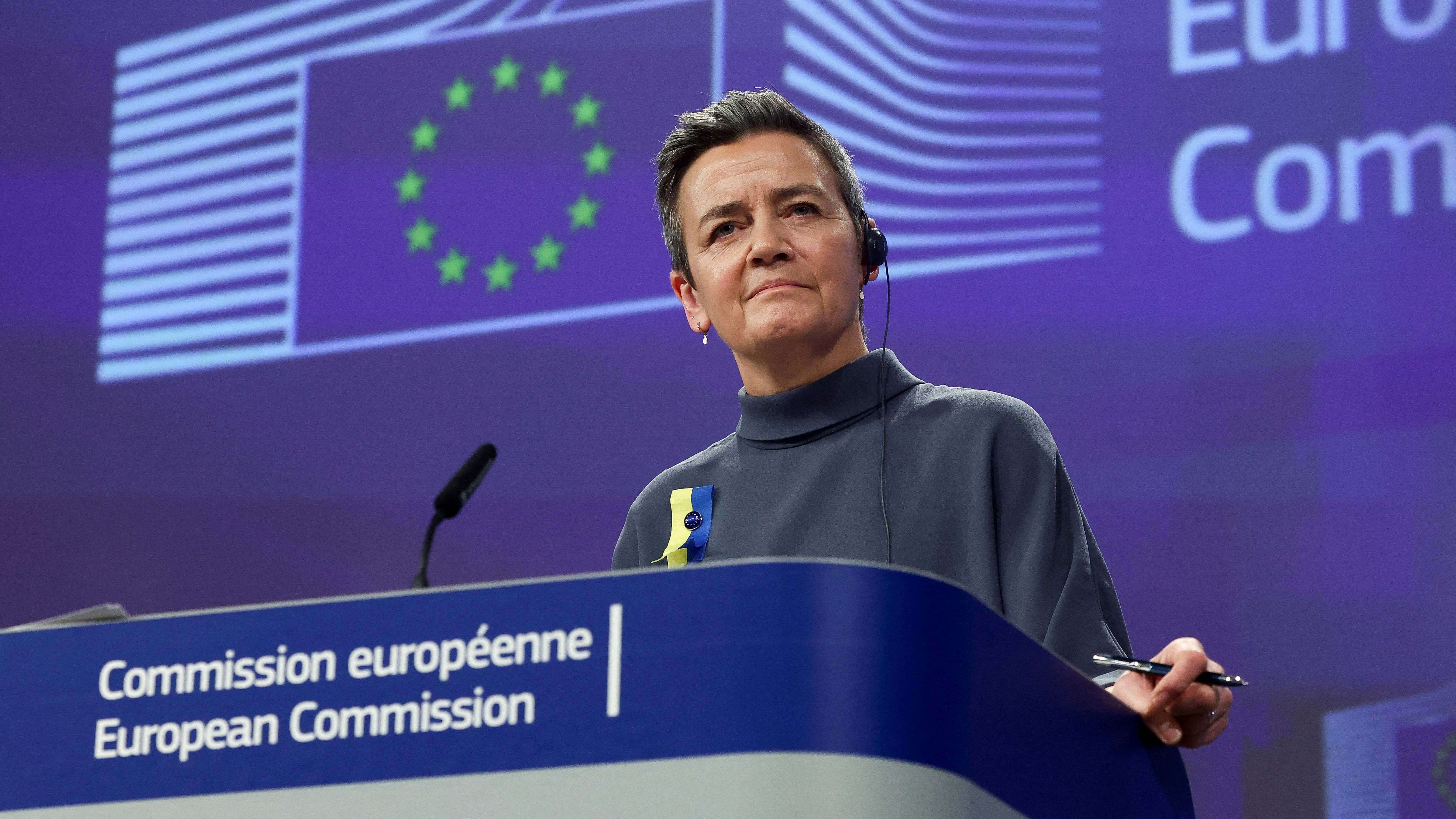China's Dominance In Wind Turbine Manufacturing
What we know about the country's wind power industry.

The European Union will investigate subsidies received by Chinese suppliers of wind turbines destined for Europe, the bloc's anti-trust commissioner, Margrethe Vestager, has said.
Tuesday's move is the latest in a growing effort in both Europe and the United States to shield domestic clean energy industries from cheap Chinese imports, which authorities say benefit from anti-competitive state subsidies.
Washington would not accept U.S. industry being "decimated" by China's excess industrial capacity in key products such as EVs, batteries and solar panels, U.S. Treasury Secretary Janet Yellen warned during a visit to China this week.
Here is what we know about China's wind power industry.
HOW BIG IS IT?
China has by far the world's biggest wind turbine production capacity, or 60% of 163 gigawatts (GW) in 2023, says Brussels-based industry association Global Wind Energy Council.
Production capacity in Europe and the United States, by contrast, stood at 19% and 9% respectively.
China exported about $1.42 billion of turbines and components to the EU last year.
Its top three manufacturers, Goldwind, Envision and Mingyang had combined orders of 55.3 GW in 2022, versus only 26.7 GW for the top three Western makers, Vestas, GE and Siemens Energy, data from consultancy Enerdata shows.
In addition to output, Chinese turbine manufacturers also lead in product design and innovation. The last four years have seen 426 new Chinese turbine models released, versus just 29 new turbines outside China, consultancy Wood Mackenzie said.
Last year, China installed the world's largest offshore wind turbine off the coast of the southern province of Fujian. The 18MW turbine is 20% more powerful than the largest turbine built by GE.
WHAT'S BEHIND ITS GROWTH?
China has long supported the development of wind farms and turbine production as part of its ambitious climate goals to reach peak emissions before 2030.
Spurred by state support, China installed 77.1 GW of wind power last year, accounting for 65% of the global total. By comparison, European Union countries built only 17 GW.
China introduced feed-in tariffs to support onshore wind power deployment in 2009 widening them to offshore projects in 2014.
Although central subsidies were phased out between 2020 and 2021, projects continue to get support from local governments.
In 2021, the southern economic powerhouse of Guangdong said it would offer subsidies of between 500 yuan ($69) and 1,500 yuan ($207) per kilowatt of offshore wind capacity until 2025.
The wind sector also continues to receive indirect support from state banks and cheap upstream components.
Manufacturing loans at China's four big state-owned banks jumped 25% last year to $1.2 trillion, targeting strategic sectors such as technology and clean energy.
In an annual report to China's legislature in March, Premier Li Qiang vowed to unleash "new productive forces" to drive growth in high-tech manufacturing as the economy stalls amid a property crunch and trade tension.
Li added that Beijing would issue one trillion yuan's worth of special purpose bonds - equivalent to $139 billion - in 2024 to help fund strategic sectors.
WHAT OTHER FACTORS KEEP CHINESE TURBINE PRICES LOW?
The situation in China’s wind turbine sector is similar to that in the solar sector, with massive domestic capacity increases underpinned by extensive government support, said Xuyang Dong, China energy policy analyst at Climate Energy Finance in Sydney.
"With a domestic supply glut and world leading technology, China will increasingly seek to export turbines."
Cheap raw materials and fierce competition have also pushed down prices. Prices of Chinese turbines dropped by more than 30% in 2023, Wood Mackenzie said.
Prices for Chinese turbines are about a fifth below rival U.S. and European products, says research service BloombergNEF.
The average bidding prices in China’s public wind project tenders fell 11.4% from 1,755 yuan ($242.65) per kilowatt at the start of 2023 to 1,555 yuan at the end of the year, leading supplier Goldwind said in its 2023 annual report.
(Reporting by Andrew Hayley; Editing by Miyoung Kim and Clarence Fernandez)
Thanks for signing up to Minutehack alerts.
Brilliant editorials heading your way soon.
Okay, Thanks!

